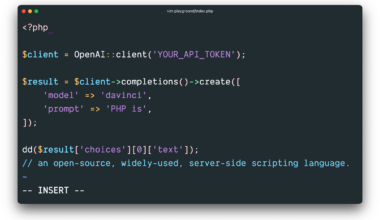Introduction to Python Sockets
Python is a versatile and powerful programming language that can be used for a wide range of tasks. One of the most useful features of Python is its ability to work with sockets, which allow for fast and efficient communication between different devices over a network. In this article, we will explore the basics of Python sockets, how they work, and how they can be used in real-world applications.
Understanding Socket Communication
Sockets are essentially endpoints in a communication channel that allows different devices to send and receive data over a network. In Python, sockets are implemented as a set of classes in the socket module. There are two types of sockets: client sockets and server sockets. Client sockets are used to initiate a connection to a server socket, while server sockets wait for incoming connections from client sockets.
Socket communication can take place over two different protocols: Transmission Control Protocol (TCP) or User Datagram Protocol (UDP). TCP is used for reliable, ordered, and error-checked delivery of data, while UDP is used for faster, unreliable, and unordered delivery of data. When using TCP, a connection is established between the client and server sockets, and data is transmitted using the connection. When using UDP, the data is transmitted as packets, without establishing a connection first.
Benefits of Using Python Sockets
Python sockets have several benefits that make them a popular choice for communication between different devices. One of the main benefits is their simplicity and ease of use. Python sockets are easy to set up and use, even for beginners. They also provide a high level of control over communication, allowing developers to fine-tune their applications for maximum performance.
Python sockets also provide a high level of flexibility, allowing for communication between different platforms and operating systems. They are also highly scalable, allowing applications to handle large volumes of traffic without sacrificing performance.
Implementing Python Sockets in Real-World Applications
Python sockets can be used in a wide range of real-world applications, from simple chat applications to complex distributed systems. Some common applications of Python sockets include:
– Web servers: Python sockets are commonly used to build web servers that can handle multiple requests simultaneously.
– Chat applications: Python sockets can be used to build chat applications that allow users to communicate with each other in real-time.
– Gaming applications: Python sockets can be used to build gaming applications that allow multiple players to interact with each other in real-time.
– Distributed systems: Python sockets can be used to build distributed systems that allow multiple devices to communicate with each other over a network.
Tips for Optimizing Python Socket Performance
To optimize the performance of Python sockets, there are several tips and techniques that developers can use. Some of these include:
– Use non-blocking sockets: Non-blocking sockets allow for asynchronous communication, which can significantly improve performance in certain applications.
– Use timeouts: By setting timeouts on socket operations, developers can prevent applications from getting stuck waiting for responses that may never arrive.
– Use threading: Threading can be used to handle multiple socket connections simultaneously, allowing applications to handle more traffic at once.
– Use buffers: By using buffers to store incoming data, applications can reduce the overhead of constantly sending and receiving small packets of data.
In conclusion, Python sockets are a powerful tool for communication between different devices over a network. They are easy to use, flexible, and highly scalable, making them a popular choice for a wide range of applications. By following the tips and techniques outlined in this article, developers can optimize the performance of their Python socket applications and build robust, reliable systems that can handle large volumes of traffic with ease.






















